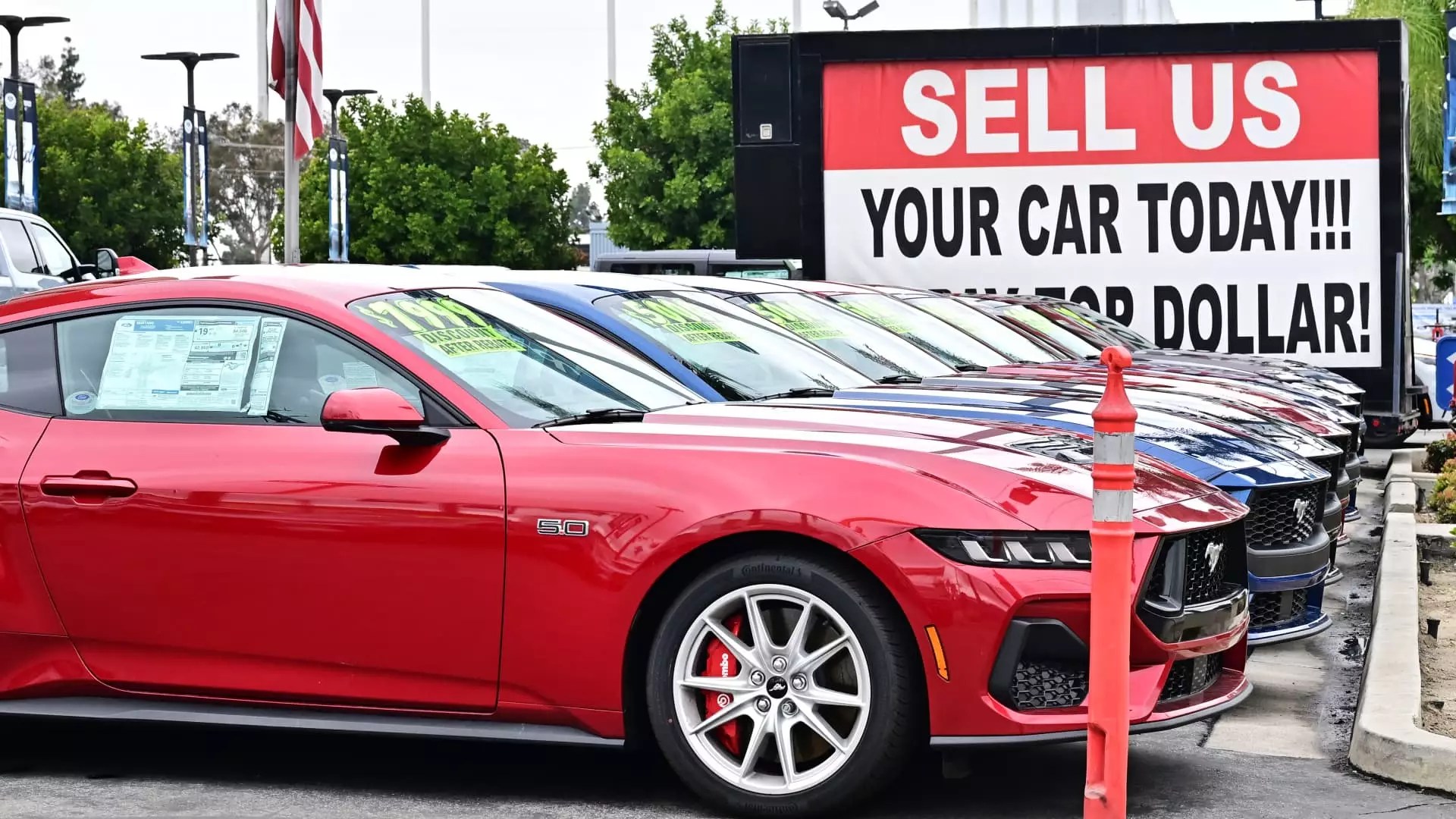The recent shift in the used car market has caught many by surprise. After reaching a peak in April, the prices of preowned vehicles experienced a notable decline of 1.5% in May. This downward trend signals a pivotal moment for consumers. It seems that the fears of escalating prices linked to tariffs galvanized many potential buyers into action, pushing them to secure vehicle purchases before the window of opportunity closed. The importance of consumer opportunism cannot be understated in the face of an unpredictable market, particularly when we see fluctuations that are reminiscent of the chaotic years of the pandemic.
Wholesale vs. Retail Prices: A Growing Gap
One of the more perplexing trends observed in recent months is the disparity between wholesale and retail prices. While wholesale values have witnessed a drop, retail prices are not reflecting this downturn with the same urgency. Traditionally, the retail market adjusts in response to wholesale transactions, yet we find ourselves in a scenario where consumers are effectively being charged more despite lower market values. This could be a moment for buyers to reckon with the reality that retailers might be clinging to inflated price tags, hoping to capitalize on consumer necessity amid a climate of uncertainty.
The Tariff Tango: Unraveling Its Impact
While tariffs imposed by the Trump administration primarily concern new vehicle imports, their repercussions are palpable throughout the entire automotive ecosystem. The 25% tariff on new imports creates a ripple effect, indirectly nudging consumers toward the used market. With new vehicle prices soaring due to tariffs and supply chain disruptions, Americans are increasingly left with fewer options. As such, the persistent demand for used vehicles—currently 2.2 million in available stock—merely hints at a larger issue: consumer vulnerability arises when faced with limited access to affordable transportation.
Supply Chain Chaos and Consumer Behavior
The pandemic’s impact on auto production continues to reverberate, prompting consumers to hold onto their vehicles longer than ever before. As the industry grapples with chronic supply shortages, the used car market becomes a battleground for buyers trying to negotiate better deals. The interplay between dwindling inventory and sustained demand creates a climate ripe for exploitation. Consumers must be savvy and act decisively, lest they get ensnared in a cycle of escalating costs fueled by a supply chain still reeling from COVID-19’s aftermath.
Signals of Stabilization or Stagnation?
Cox Automotive’s reports of price stabilization are certainly a breath of fresh air after years of volatility. However, it’s essential to approach this news with measured caution. Just because prices have shown a tendency to stabilize doesn’t mean that the underlying issues have resolved. The fixation on transactional statistics can be misleading when broader economic forces—like tariffs, inflation, and supply shortages—remain unresolved. It’s a precarious path for consumers who might believe the current market conditions will lead to favorable buying terms. In this climate, the question remains: will prices continue to right themselves, or are we merely witnessing a temporary plateau?
In sum, consumers in the used vehicle marketplace are standing at a crossroads. A keen understanding of shifting trends, supplier limitations, and pricing strategies is crucial for making informed decisions in an environment that feels anything but stable.


Leave a Reply